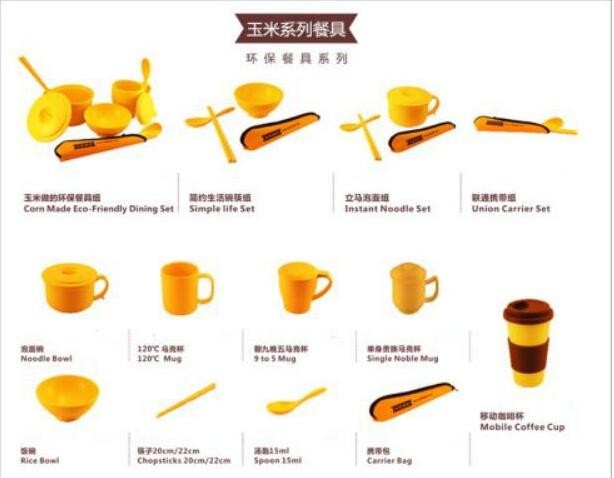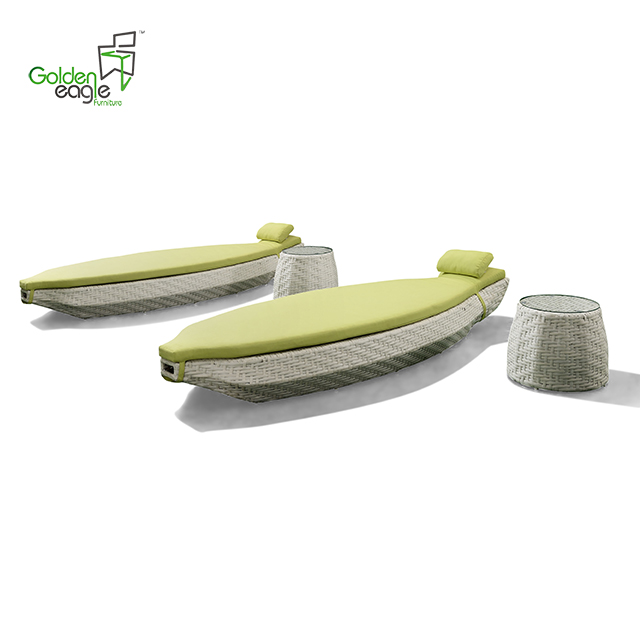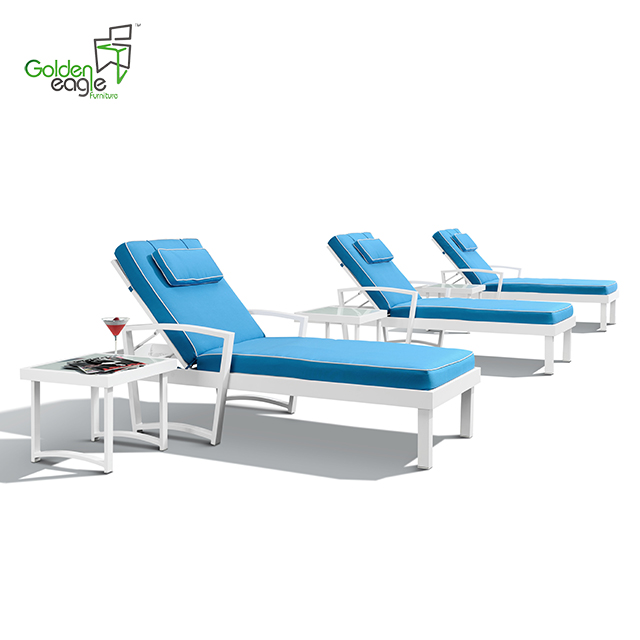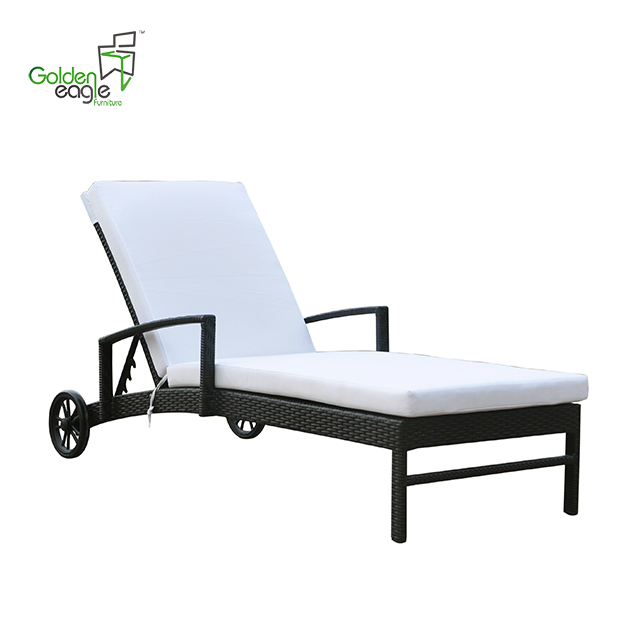[China Packaging Network News] Today's society's plastic packaging materials cause serious "white pollution", destroyed the ecological environment, resulting in the waste of resources. The bio-packaging materials produced from natural degradable materials such as straw starch, cellulose, protein and chitin as raw materials have the characteristics of abundant sources, low prices, no pollution and easy decomposition, and have a wide range of application prospects.
Plastic products have the advantages of airtight, impervious to water, acid and alkali resistance, light weight, high strength, durability, and low price, and thus become the most widely used materials in the packaging industry. In addition to production companies, retailers, farmers markets and even street stalls are not the main packaging materials for plastic bags and foam plastic boxes. About half of these products are disposed of in the environment and generally take 200 years to degrade. Another type of packaging material used in large quantities is paper and plastic products. Most of these paper and plastic products are discarded in the environment after use. Even under the action of microorganisms, it takes 80 years to degrade. The serious consequences of such discarded plastic products being thrown away into the environment are the enormous waste of resources and environmental pollution.
In response to this situation, scientists have proposed the concept of "environmental packaging". This material must not only pursue good performance, but also have a deep understanding of the limited nature of natural resources and minimize the amount of waste emissions, and the The extraction, preparation, and use are all reduced to the least possible extent in the entire process of disposal and recycling. This is a material that takes full account of environmental, ecological and resource factors. This material has the characteristics of saving resources, reducing pollution, having little impact on ecology, being reusable and degradable.
In recent years, countries around the world have successively developed some degradable plastics and biomaterials, which have greatly promoted the development of packaging materials industry in various countries. Degradable plastics (mainly additives such as starch, cellulose, photosensitizers, biodegradants, etc.) in plastics have the disadvantages of large amounts of food consumption, visual pollution, etc., and the presence of plastic micro-materials makes them more degradable in soil. Slow, can not be recycled. Therefore, the application prospects of degradable plastics have limitations, and the most promising potential is bio-packaging materials.
Classification of biological packaging materials
Starch, as a natural polymer material, is rich in sources and cheap in price. Under the action of microorganisms, it is decomposed into glucose and finally metabolized into water and carbon dioxide. It is an inexhaustible renewable resource.
Natural plant fiber is also a renewable resource that meets the requirements of sustainable development. It is the most abundant carbohydrate on the planet. In nature it can be degraded by microbial degradation enzymes and taken up as a plant or microbial nutrient source.
Chitin is a general name for chitin and chitosan. It is abundantly present in the shells of lower animals, especially arthropods (crabs, shrimps, insects, etc.). Chitin fibers are naturally the only positively-charged cationic natural fibers. Each year, the global biosynthetic chitin reaches tens of billions of tons, and the output is second only to natural cellulose. It is the second largest bio-polymer resource on earth.
Application of bio-packaging materials
In recent years, people have used raw biological materials to make packaging raw materials, or extracted raw materials for making packaging materials from natural biological materials, and developed new biological packaging materials. Once these biological packaging materials come out, they show their strong vitality.
Starch-based bio-packaging materials
In recent years, the biodegradable or soluble degradable plastics of modified starches have become the focus of research and development of starch-based materials. Starch-based materials can be used as a package for deep-fried snack foods, disposable food bags, and outer films for paper packages.
Starch-based polyvinyl alcohol is a typical representative of starch-based packaging materials. It treats the starch before it is made into a film, that is, "disorder and plasticization" or chemical modification in the extruder, adding a certain amount of plasticizer starch, and then polyvinyl alcohol or polyacetal lactone Blending gives a transparent film. The starch part of the membrane biodegrades and the rest degrades during the accumulation process. The starch-polyvinyl alcohol film has moderate gas barrier properties, and its mechanical properties are inferior to those of synthetic polymers. It can be used instead of low density polyethylene in food disposable bags. Experiments show that starch-based materials do not promote the growth of microorganisms, and bacteria outside the package do not penetrate into the package, indicating that starch-based materials have the potential for long-term packaging.
Corn is a delicious and nutritious starch food. It is also widely used in the manufacture of sweeteners and animal feeds. With the advancement of technology, the sugar in corn is extracted, fermented, distilled, and extracted to obtain the base material for making plastics and fibers. The base material is then processed into polylactide (PLA) fine particles with a diameter of only 4.57 mm. . Finally, these small particles are made into bags, foam or tableware.
Application of Cellulose Synthetic Materials
Cellulose is a polyhydroxy glucose polymer, which has different functional characteristics after specific physical and chemical modification. It can appear in powdery, flake-like, film-like, fiber and solution forms. It is also inexpensive and biodegradable. And does not pollute the environment and other advantages. As a result, functional materials developed with cellulose are extremely flexible and have a wide range of applications.
The various biodegradable materials synthesized from cellulose, due to their large number of hydroxyl groups on the macromolecular chain, have a strong reaction performance and interaction performance, therefore, the processing technology of such materials is relatively simple, low-cost, non-polluting process; Can be fully degraded by microorganisms; cellulose material itself is non-toxic and can be widely used. Due to the strong hydrogen bonds between cellulose molecules, the degree of orientation, and the high degree of crystallinity are insoluble in common solvents, they cannot be used directly to make biodegradable materials and must be modified. The cellulose modification methods mainly include acylation, etherification and oxidation to aldehydes, ketones, acids and the like.
The straw board processed by straw has the functions of energy saving, heat preservation, heat insulation, sound insulation, etc., good air permeability, high impact strength, and waterproof and shock resistance are significantly higher than traditional materials; In addition, straw boards are used as packaging materials, and The unit quality is 1/10 of the same volume cardboard material, which has obvious advantages.
In addition to rice straw, domestic straw pulp was used as the main raw material to develop disposable cardboard. The use of chemical additives to optimize the application of technology to improve the quality of straw pulp, straw pulp to ensure close to the physical properties of the production of cutlery cardboard, the surface has been adapted to food packaging processing, so that the finished product is resistant to hot water, no leakage, no distinction Layer, anti-oil and heat sealing functions.

Protein membrane material
Although the membrane made of vegetable protein is not completely hydrophobic, it has better moisture-blocking performance and oxygen-barrier performance, and can be extruded; its oxygen-barrier property is greatly influenced by the environmental humidity, and can be formed during film formation. Qualitative compounding to improve oxygen barrier stability for the application and improvement of oil content in food storage.
Wheat gluten film has been used to coat deep-fried peanuts and fried chicken. This kind of film has suitable oxygen barrier properties, but it is fully permeable to carbon dioxide, suitable for fresh products that require respiration, and for aromatic substances. The transmission rate is 1/10 of that of the low density polyethylene film, which is advantageous for preservation of food flavor.
Animal-derived proteins are used to make membranes mainly using collagen, whey protein and casein. Collagen membrane is a kind of edible protein membrane. It has good oxygen barrier under low humidity, and it is widely used as sausage casing. Whey protein membrane can reduce oxygen permeation, combined with ethyl glycerol monoglyceride coating. Frozen salmon and roasted peanuts can significantly reduce the oxidation rate, and also can migrate less of the moisture in breakfast foods; the composite film of casein and fat can be used to preserve fresh vegetables, dried fruits, and freezing rain, which can reduce water migration. And grease oxidation.
Chitin and chitosan composites
The packaging material prepared by processing with chitin has good air permeability and water absorption and moisture retention. The material also has good chemical stability, light resistance, chemical resistance, oil resistance, organic solution resistance, cold resistance, etc., and its stability is superior to paper. Since chitin is derived from biological structural materials, it has strong affinity with human cells and biological compatibility, can be decomposed and absorbed by enzymes in the body, has no toxicity and side effects to human body, and can effectively protect the human body from the natural world. Micro-radiation, heavy metal ions and other skin damage can be used to make textiles.

Through the chemical modification and modification of chitin and chitosan to produce unique derivatives, it has become an important aspect of application development in the world today. At present, high-tech marine biomaterials manufactured using chitin and its derivatives have been introduced internationally, and the number of applied products has reached more than 500. The United States, Japan, Italy, Norway, India and South Korea and other countries have successively established chitosan chitosan production plants, of which Japan and the United States are major producing countries, and at the same time are major consumer countries.
Other bio-packaging materials
British scientists extracted three kinds of genes that can produce plastics from bacteria that make biopolymers and then transferred them to rapeseed plants. After a period of time, they produced a polymer solution, which was then processed to produce a Seed plastic. With this kind of plastics, packing materials or pediatric diapers can be processed and disposed of without self-contamination. At present, because the cost of extracting polymers from microorganisms cannot be widely used, it would be a potential polymer if the cost can be reduced by expanding the scale of production and changing the process.
Brazil has developed a new environmentally friendly substance called "biofoam" that can replace existing foams. 70% of the new material is derived from the oil products of corn, soybeans, and castor, while the oil component accounts for only 30%. Biofoam can be used as a light-weight packaging material and is dissolved in nature in less than two years.
In China, the development of new biological packaging materials has also achieved certain results. Having mastered the technology of processing deteriorating grain into a shock-proof decompression packaging material, it has not only found a way out for China's metamorphic grains, but has also successfully explored the path to replacing packaging materials. In addition, they can also process bagasse, wheat straw, and waste newspapers into a variety of shock-proof vacuum packaging materials, such as gold, orange, and light gray. Tests have shown that the performance of this material is not inferior to that of foamed plastics. At present, it is only necessary to do further research on reducing weight.
to sum up
With the strengthening of people’s awareness of environmental protection in the modern era, in the face of increasingly severe “white pollution†and the depletion of traditional resources, research and development of new types of packaging materials is of great significance. Bio-packaging materials show a comprehensive and new scientific field from the fields of environmental science, ecological science, and polymer science, and are important fields in the material world of the new century. At present, bio-packaging materials are limited to their high cost. With the development of economy, science and technology and culture, bio-packaging materials will be more developed.
Single Beach Chair
with excellent UV resistant PE rattan weaving and alu frame, waterproof polyester or olefin fabric, single beach chair is best choice for your hotel or swimming pool. With a umbrella and a coffee or tea, you can relax in the sandbeach. engoy the sunshine with your friend and family.
Handwoven premium resin wicker UV resistant
Rust-resistant powder-coated frames
Cushions included with 30 density sofa foam
Versatile tempered glass tables
Cushions also available with 100% waterproof fabric.
Single beach chair with different style and hand weaving




If you have any questions, please contact with us directly. Outdoor Sofa Furniture are produced
by Golden Eagle Outdoor Furniture With High Quality and Good Appearance. Welcome you can visit our Factory.For any inquiry,Please send mail directly to us.
Single Beach Chair,Outdoor Lounge Furniture,Leach Chair Furniture,Outside Patio Furniture
Golden Eagle Outdoor Furniture Co., LTD. , https://www.geleisurefurniture.com